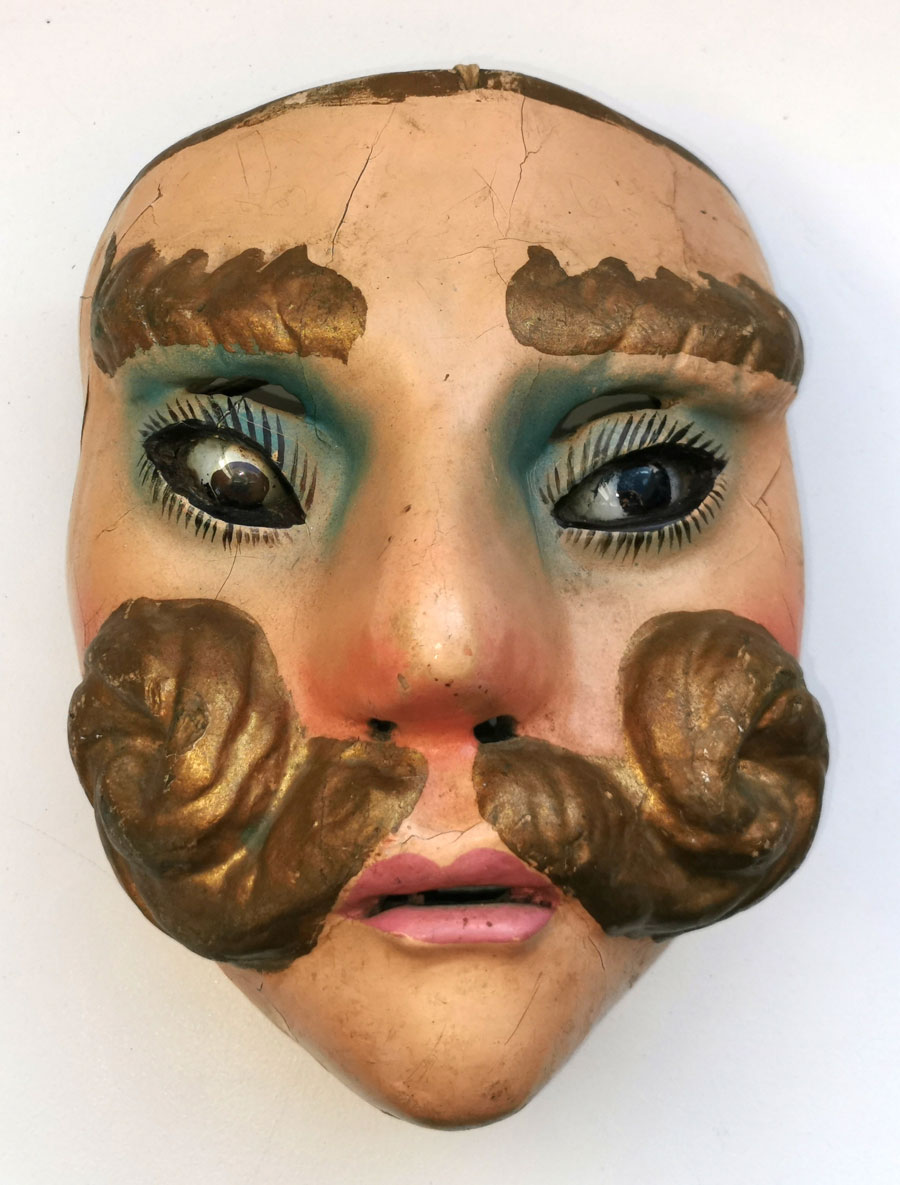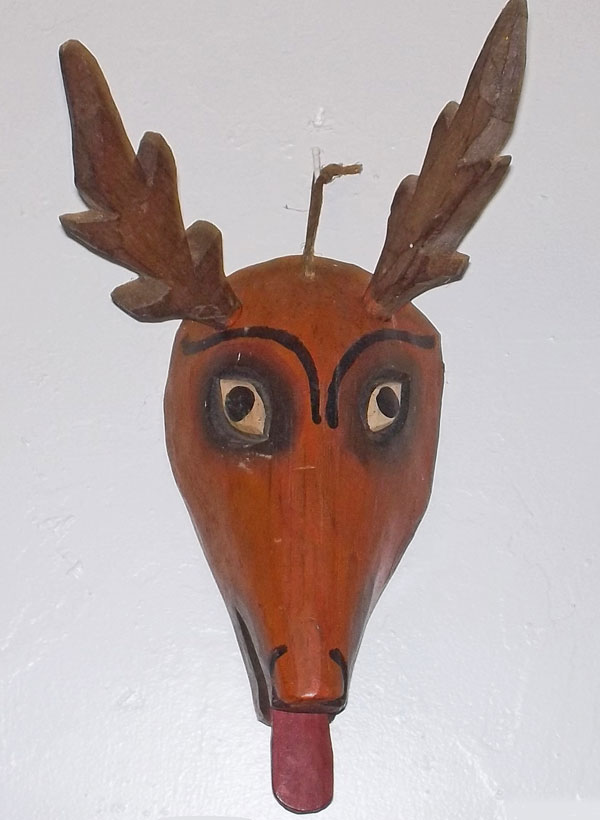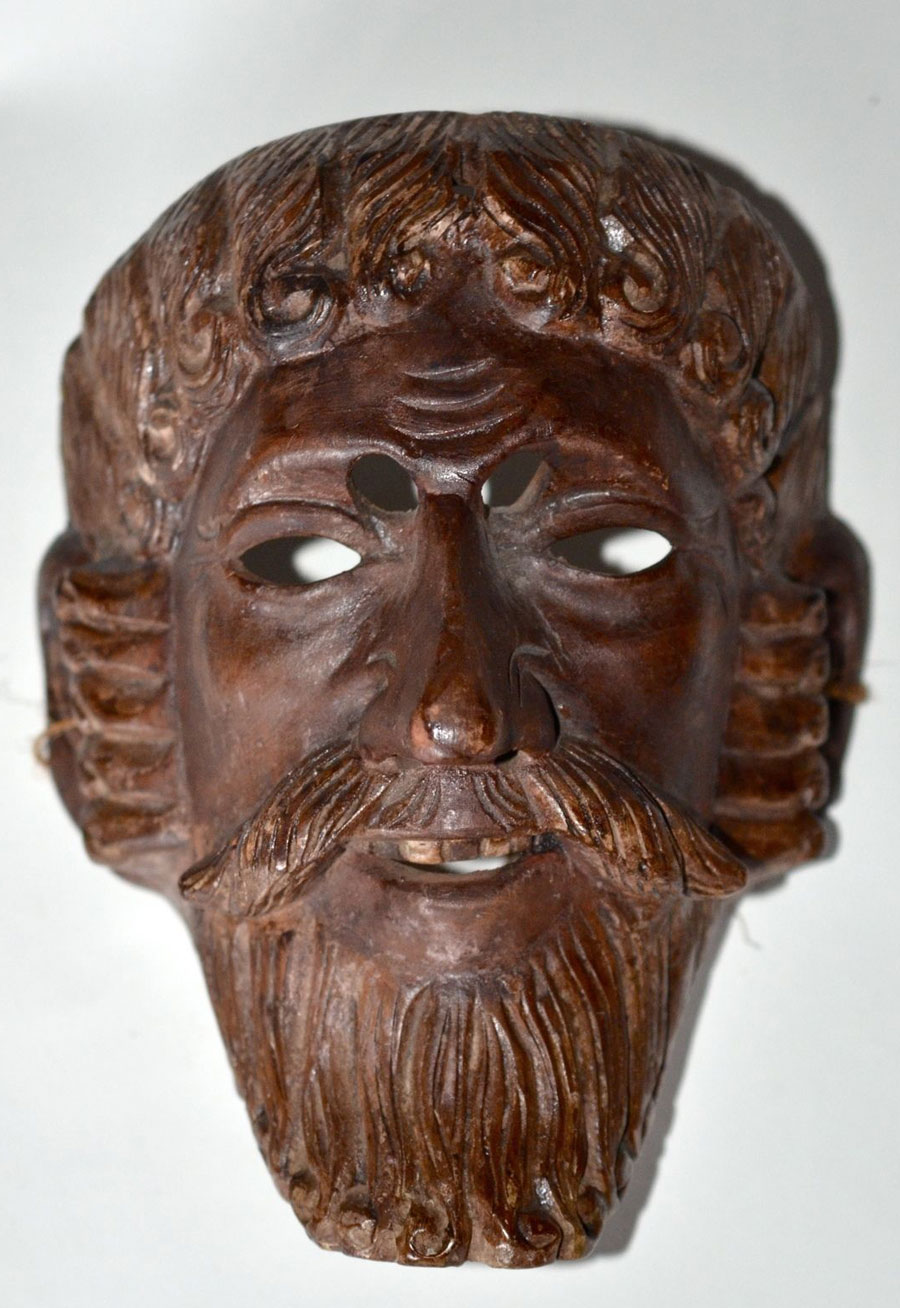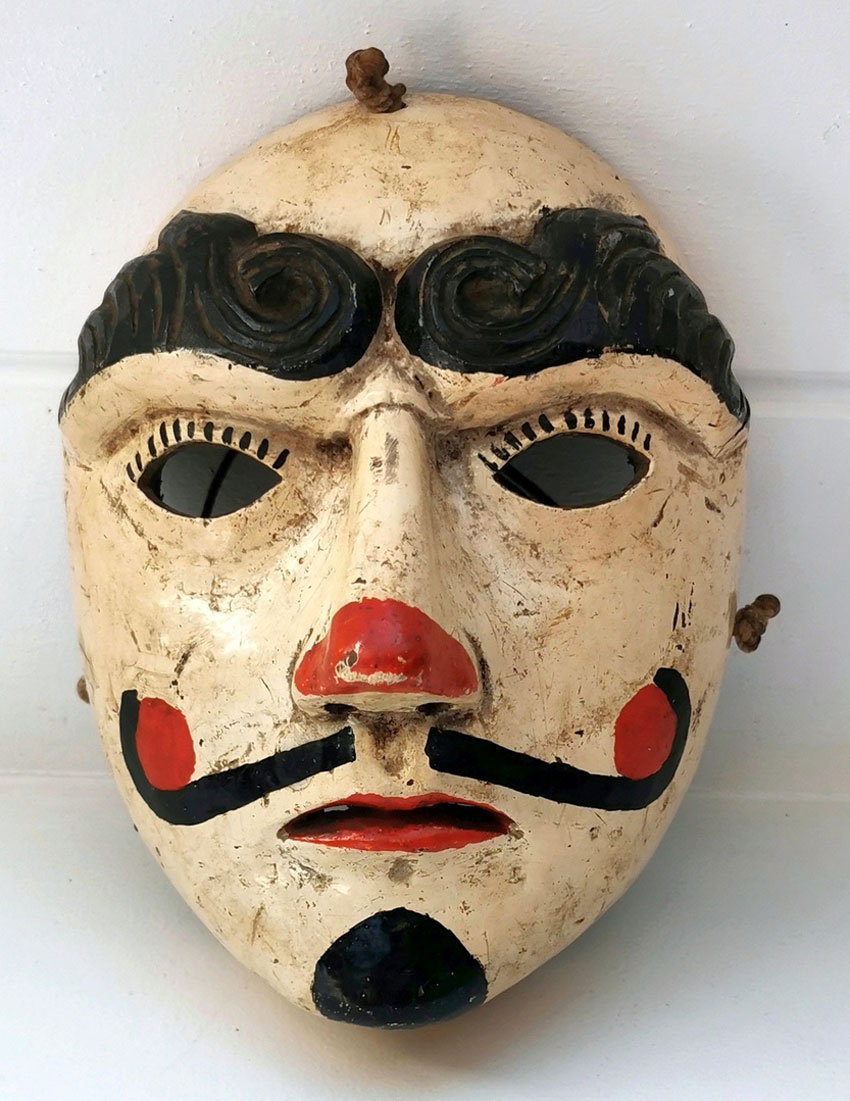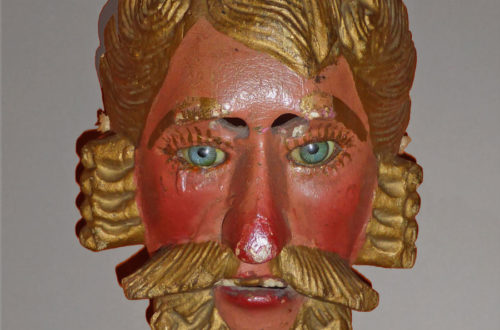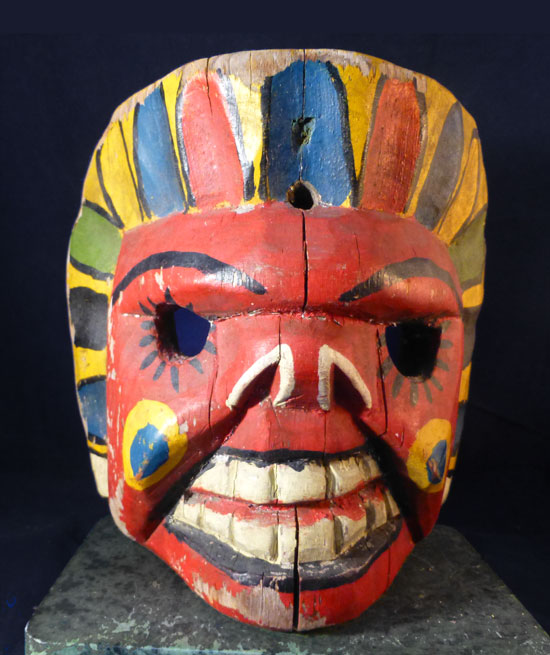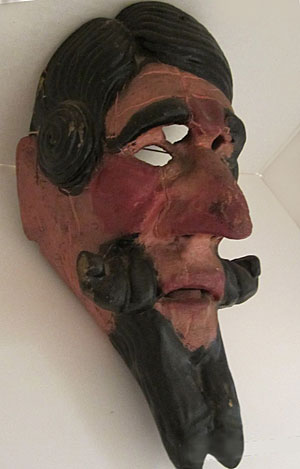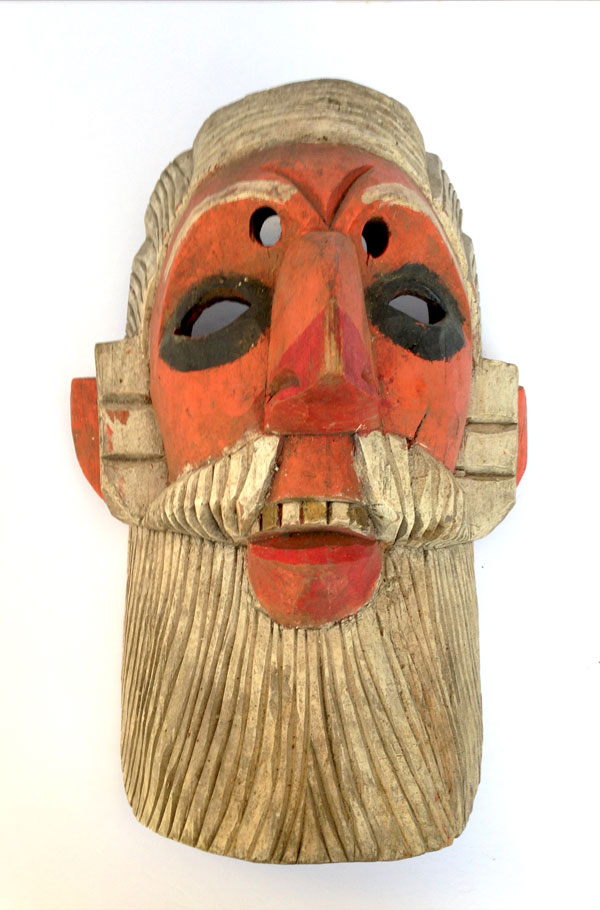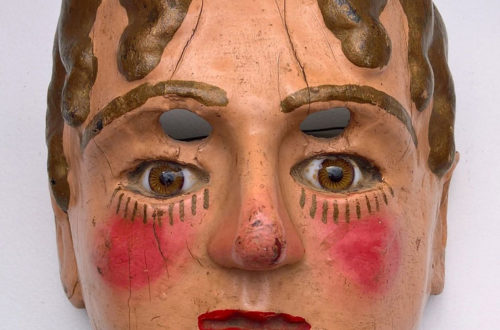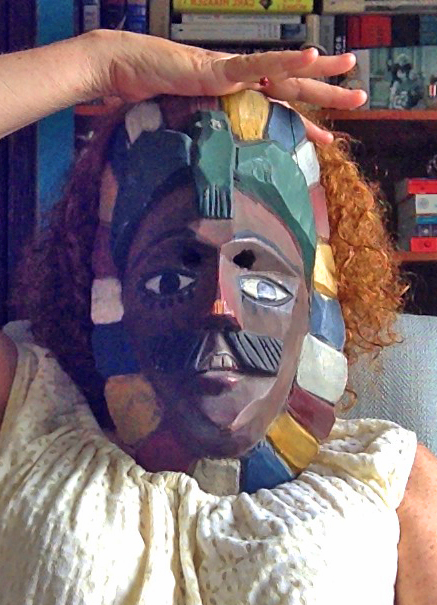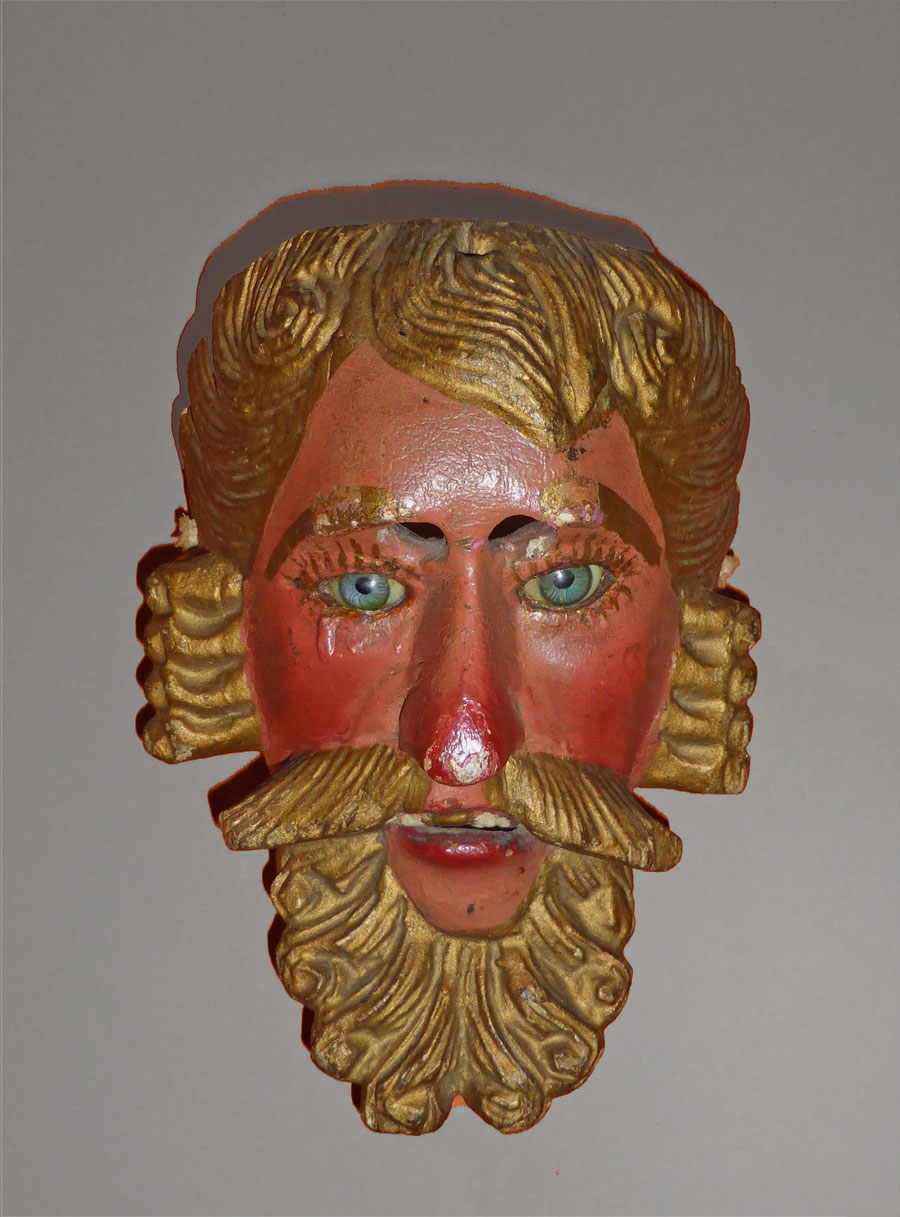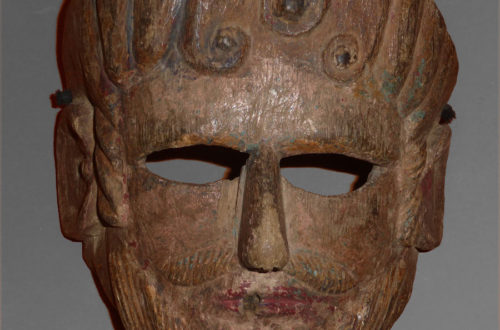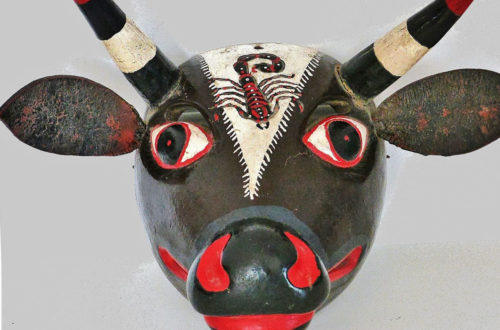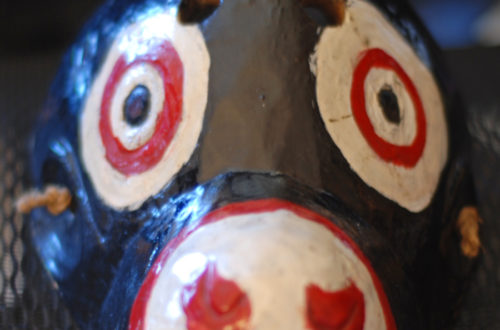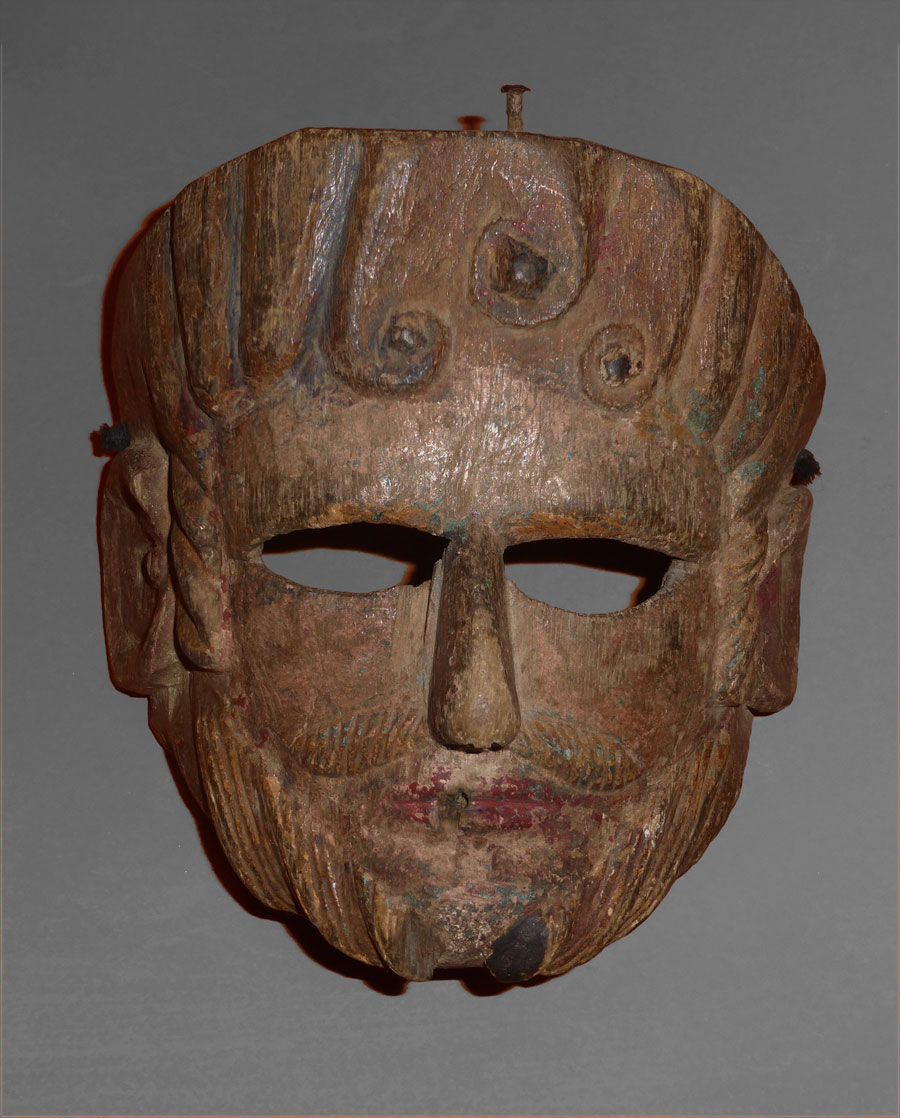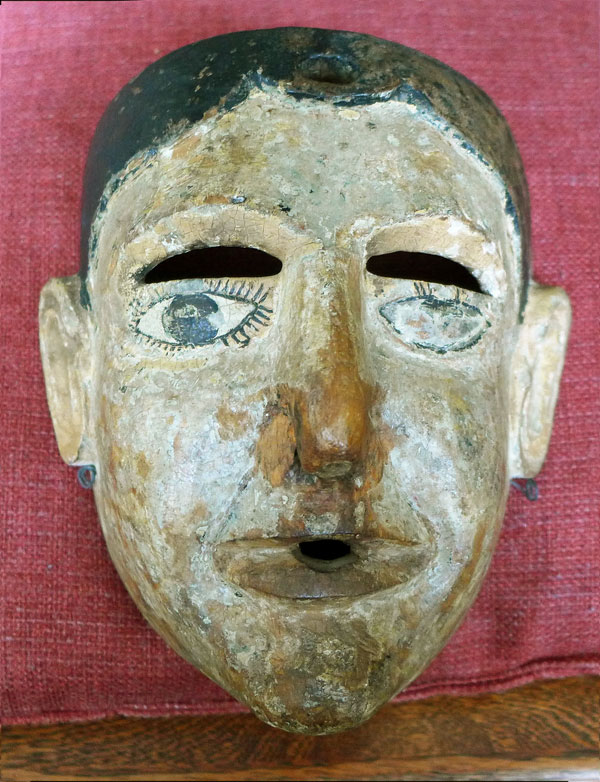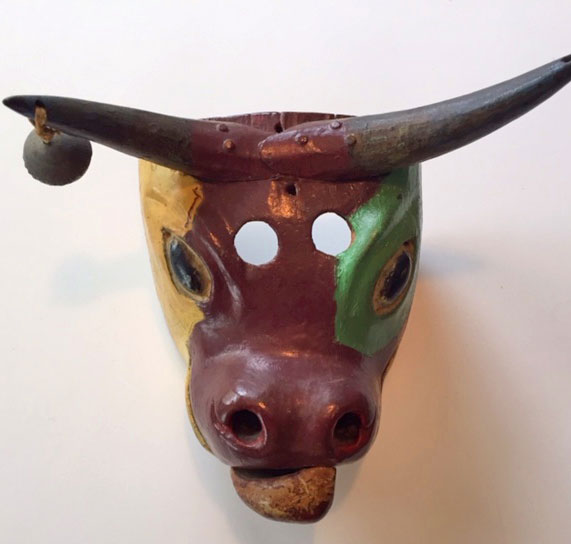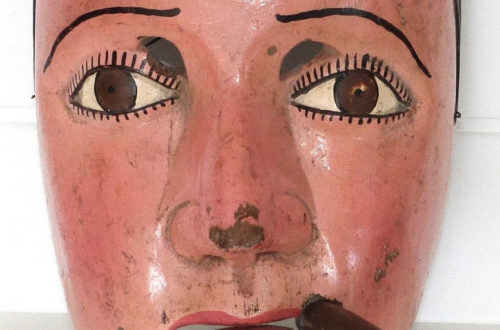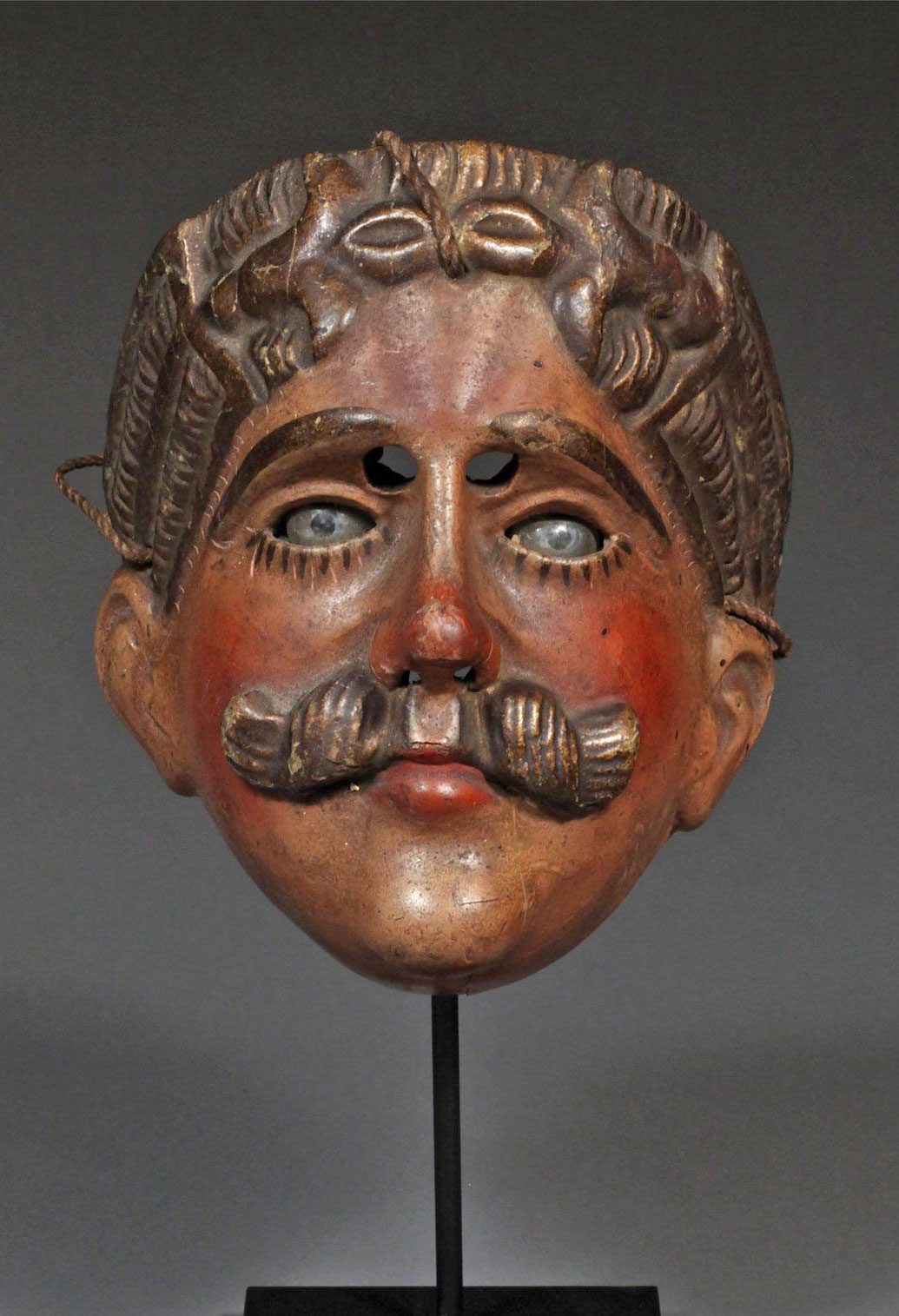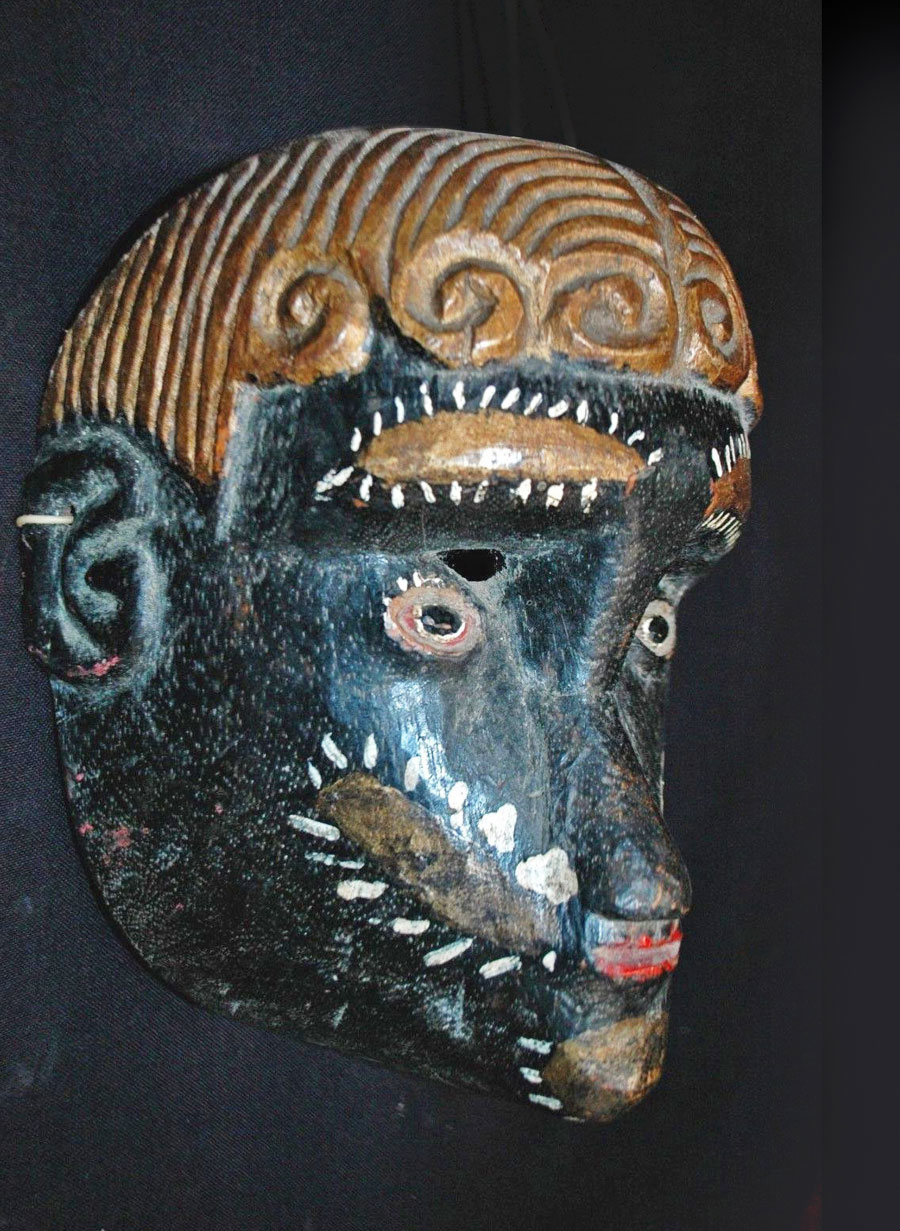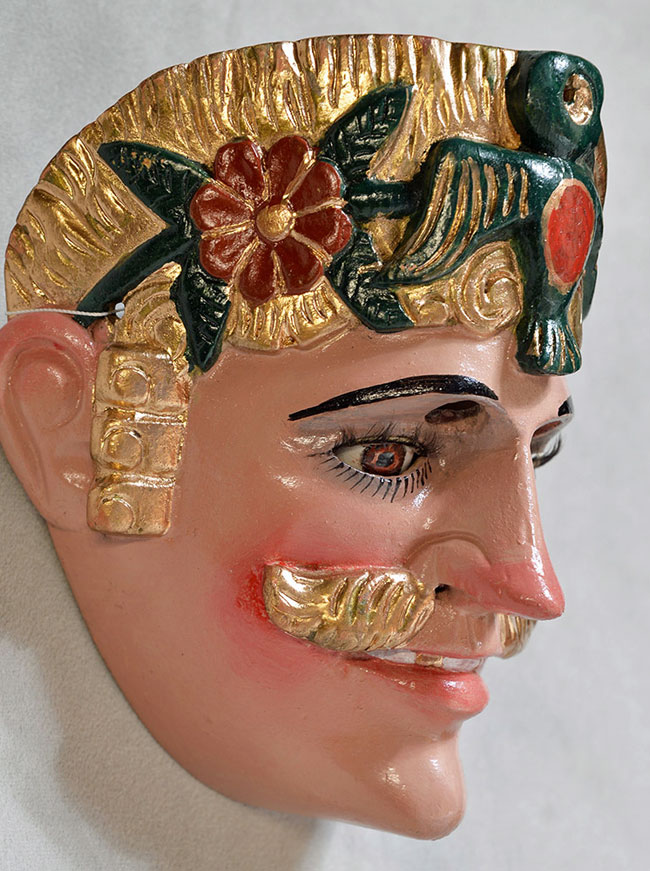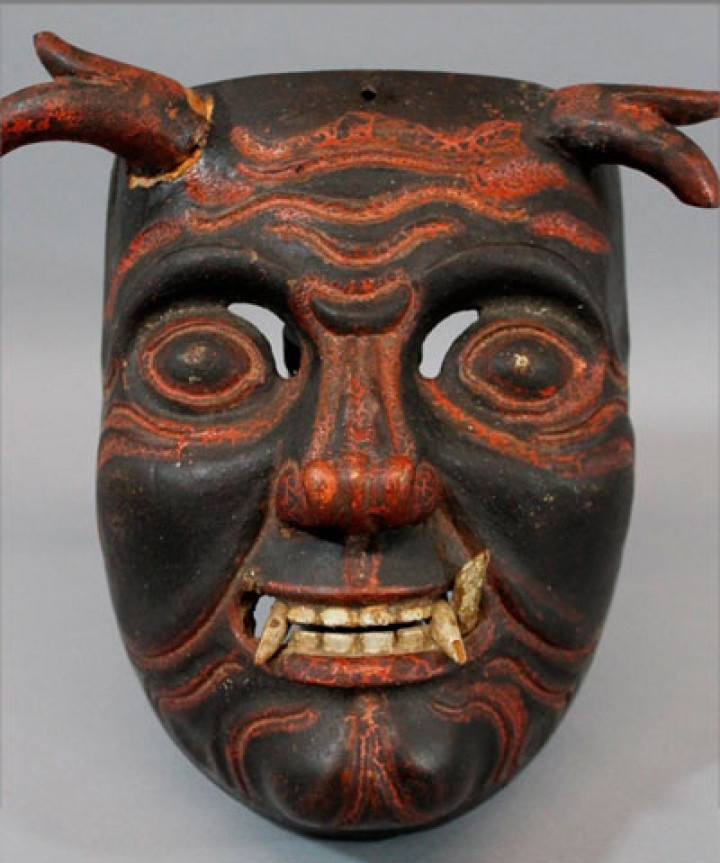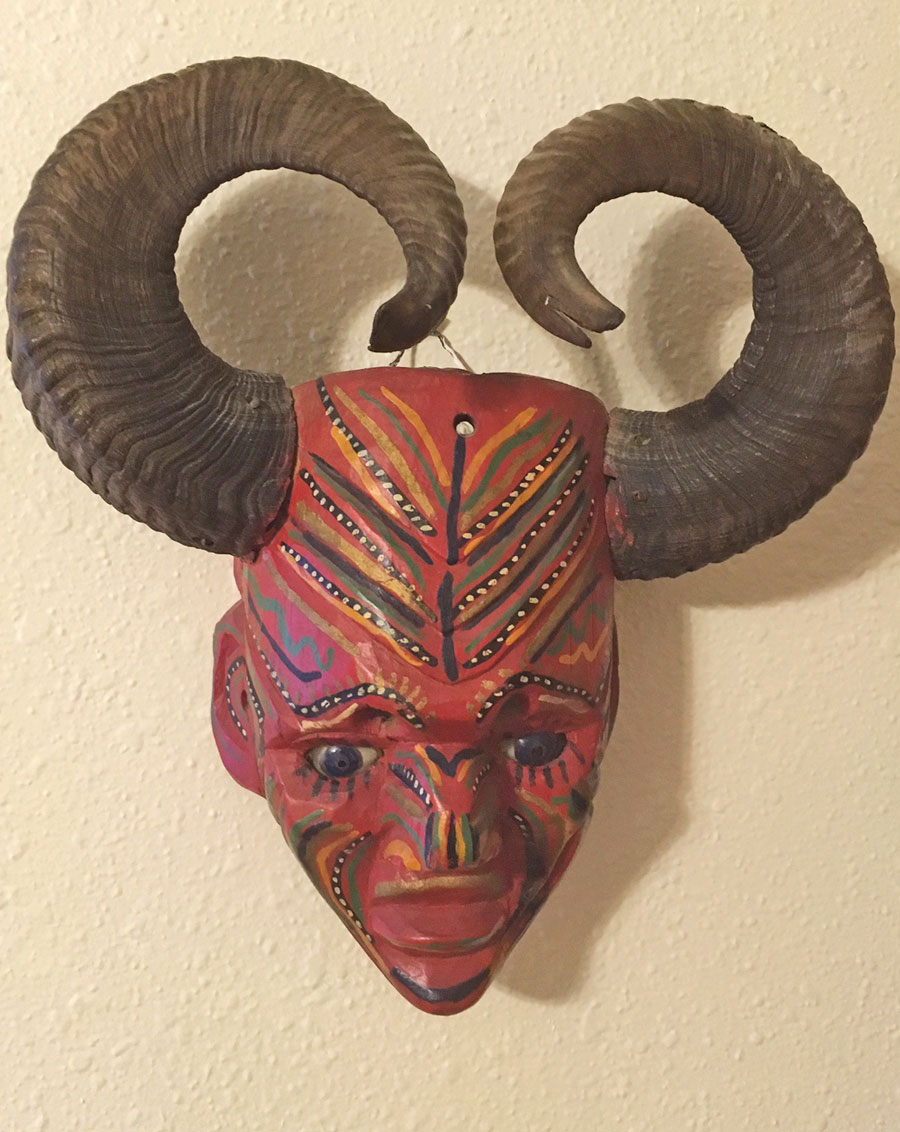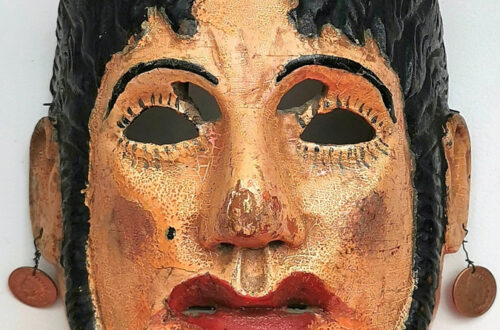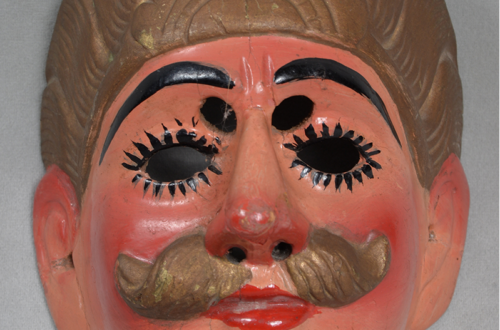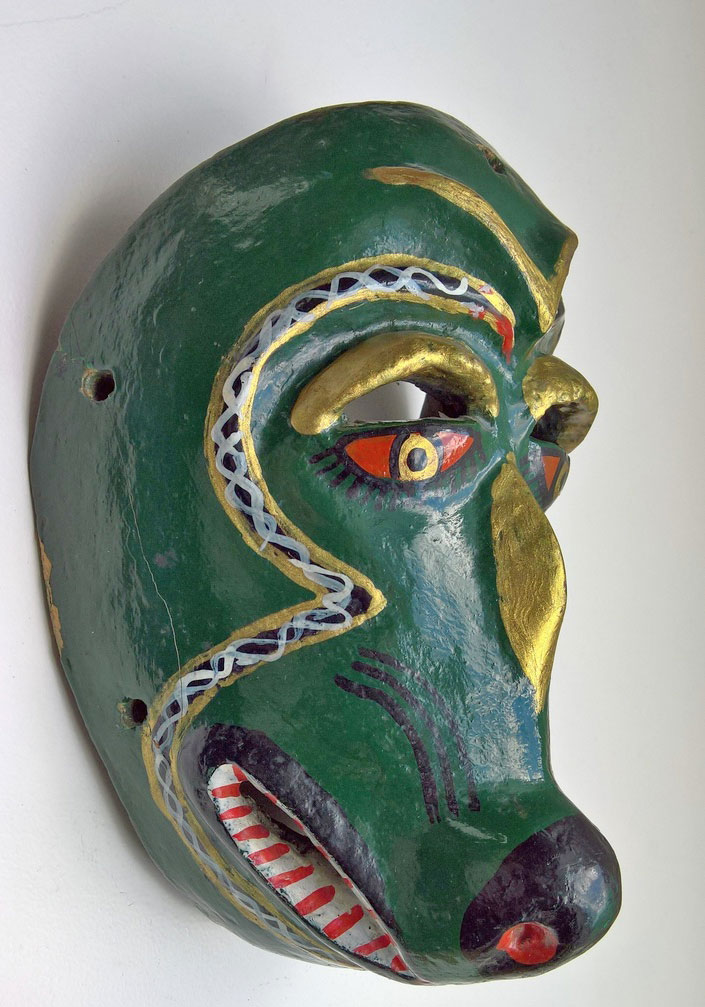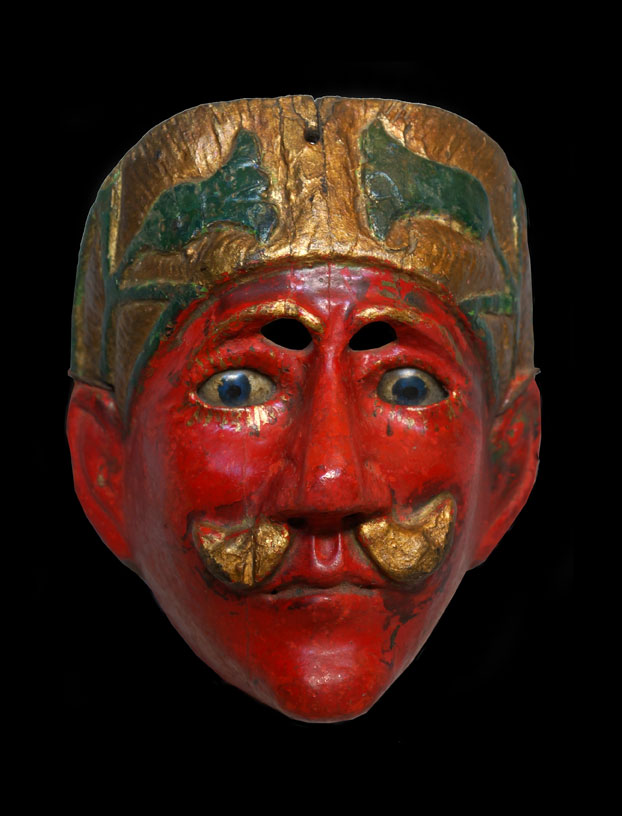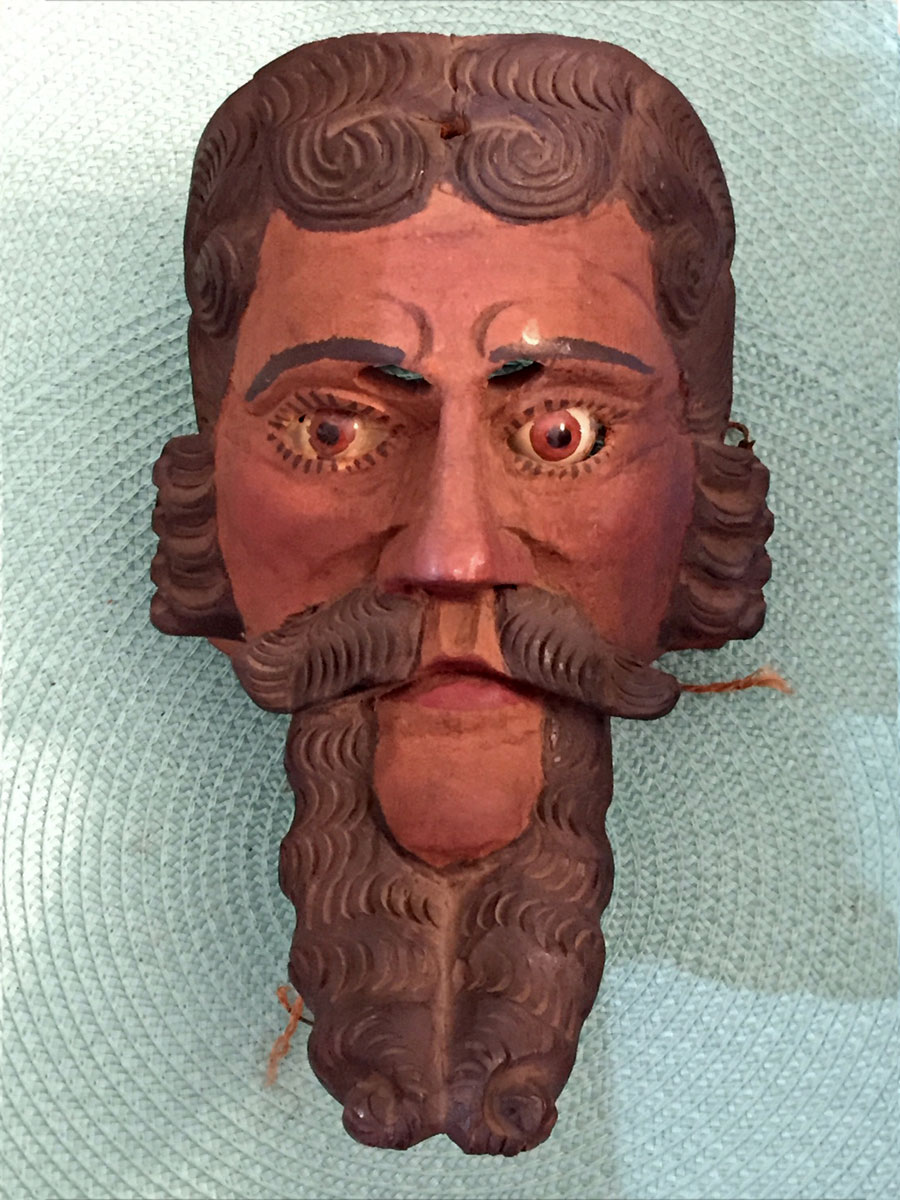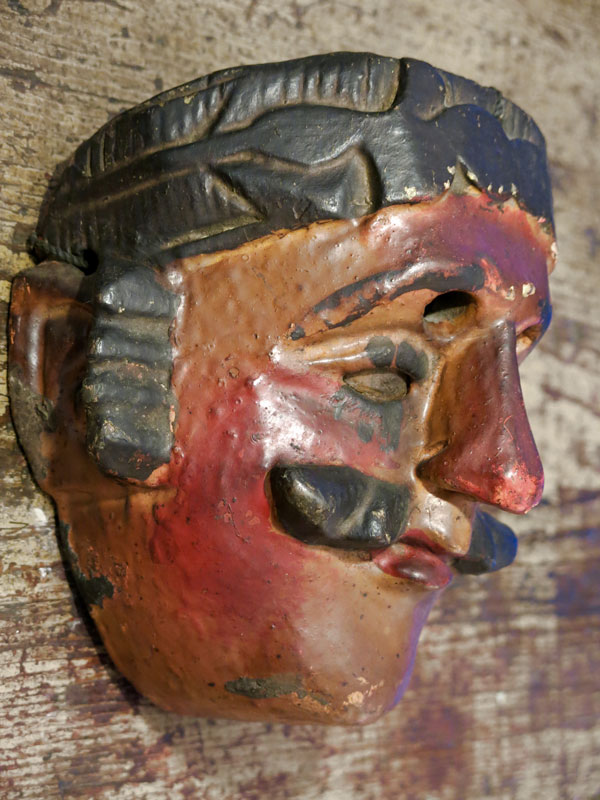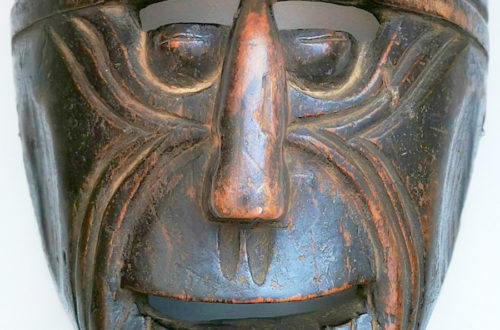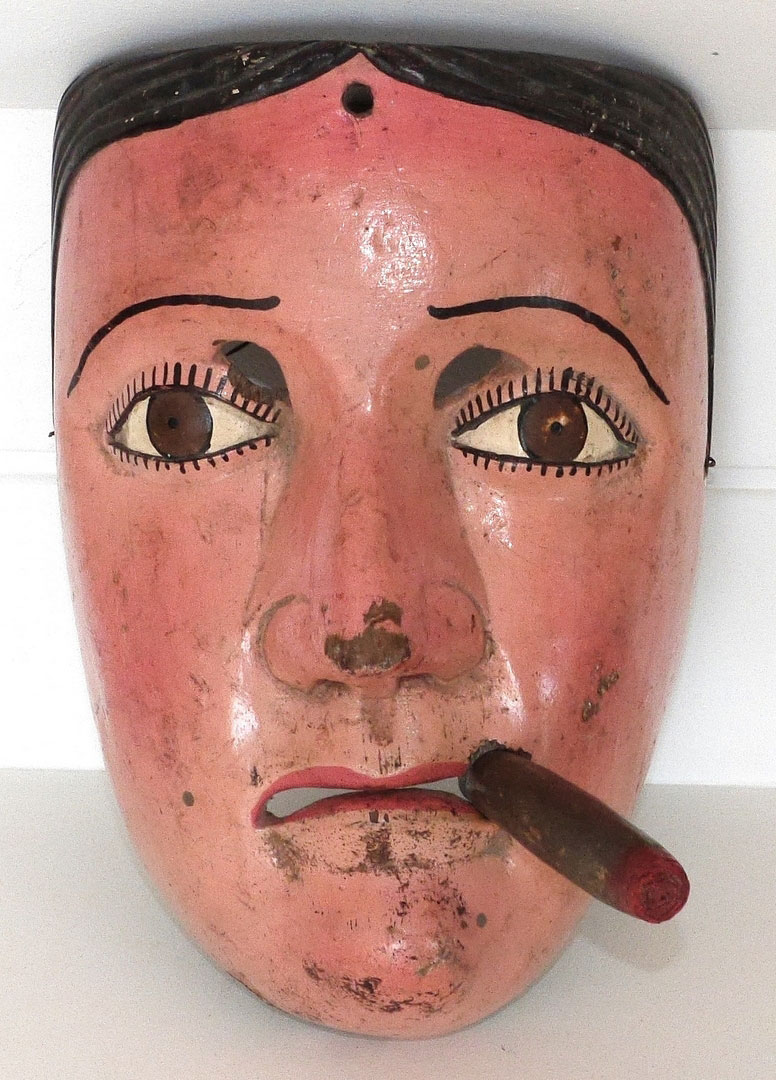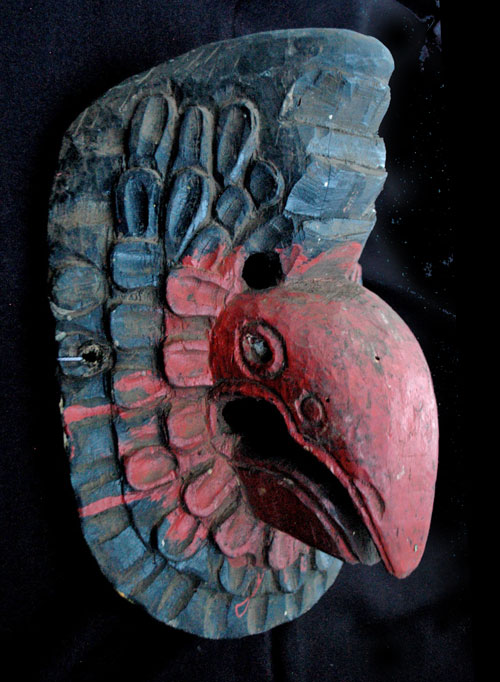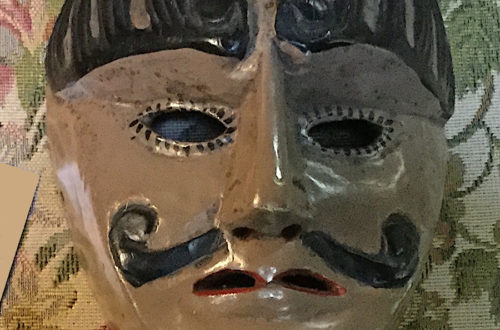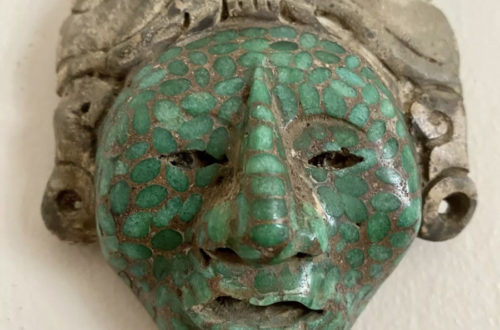Q: Here is a Guatemalan masks recently found, and now just coming back from the restorer. It could be a “cristiano” or “conquistador.” The style of the masks is of the Alta Verapaz region, probably from early-mid XX. There is a nice dark patina on the back. Very hard wood, and heavy. It has a thick layer of gesso and several layers of paint. Jean, 1608 A: We have a lot of masks from the small country of Guatemala in the archives of this site. Even though you can immediately recognize the country of origin, this mask is different from all the others. One can tell it is old and…
-
-
Patzcar Patron mask from Guatemala
Q: Taking a look at the posts concerning Guatemala on your website, I found the one from 13/01/2018 (“Repro of Patron mask from Guatemala”). Maybe you will find interesting this Patrón, a nicely carved example, not very old, dating probably from the mid-20th century and showing a nice patina on the back. Cedar hardwood. Dance Patzcar, mainly Nahualá and around (province of Sololá). Very similar to the one presented on “https://mexicandancemasks.com/?p=3895”. For details and pics about the Patzcar family of dances, see “Masks of Guatemalan Traditional Dances, Brown and Rossilli, 2008, vol 1, pg251-276. As mention there, these dances are erroneously mixed up by some authors (including Pieper in his…
-
Rare torito mask from Guatemala
Q: Torito masks are common in Guatemala. There is already several examples on your site. Most are big with ears and horns, frequently a visible tongue, actually relatively realistic. There is one dance where the toritos masks are totally different and very specific, the Patzcar dance in the province of Sololá, frequently around Nahuala. Here is a nice used example of this type, probably mid XXth (40ies). The front bell and colorful ribbons are very typical of these masks. They are very small, not exceeding 6.5 inches, much smaller than the usual toritos masks used elsewhere in Guatemala, that can measure up to 8-9 inches. 1599, Jean Obscure Find A:…
-
More about Guatemalan morerias
Q: This mask is a Guatemalan dance mask depicting the character of Pedro Alvarez. Material: brown wood with layers of paint and blue glass eyes that are fixed from the back with a hardened wax. Size: 8.9” x 6.1” (22,5 x 15,5 cm). On the front side I count 3 different layers of paint over a grounding of cream white gesso. On the back side are carved the initials AP and I have read that this is a maker’s mark (but cannot find the passage with AP again). Hanno, 1592 A: AP is the mark of Pedro Antonio Tistoj Mazariegos who had a moreria in Tetonicapan. You can see his…
-
Guatemalan small mask, rare and old
Q: This mask is rather mysterious to me, although I think it is still from Guatemala. Material: a heavy, dark brown wood with few rests of paint. The size is very small like for a child: 5.5” x 5.5” (14 x 14 cm). It shows a Spaniard with curly hairs, a thin long nose and beard. The style is severe, the painting very faded and reduced to stains, but I see traces of different layers of white (gesso?), red, blue and yellow. Small parts of the wood are chipped off like the tips of the beard, one with black wax on it, the lower lip and around the eyes. There…
-
Old cowboy mask from Guatemala
MasksoftheWorld.com has been on the internet for a long time. As the Mask Man I look at several hundred Mystery Masks every year. Most of them are poorly made “tourist masks” and they always look old and used. I answer the emails but hardly ever post them for you to see. Fakes don’t interest me much. When I saw this beautiful Vaquero on Google I wanted to share it with you. This is what an authentic old-used (Guatemalan) mask should look like. Enlarge it and check out the details. It has been repainted several times and used frequently for many years.
-
Red devil from Guatemala
Q: You already have one of these masks on your website, the male demon from Guatemala. This is what I am told the female looks like. My mom bought these around the same time I think in the late 50’s. Do you know if it is also from Guatemala? There are eye holes and a hole on the side. I included a side, front and rear picture. Pat, 1543 A: This is the second devil mask from Guatemala we received in two days. Both are of very good quality. This one has a beautiful pair of ram horns on it and is much more common. Most are made for sale…
-
Green devil from Guatemala
Q: Did you ever see this mask? It is a rarely seen Guatemalan mask. It represents Alwasiir, the green devil in the Baile San Jorge in Rabinal and El Diablo. He is called Murcielago in the Baile La Princesa in Coban. Both dances tell the story of St Georges. This one is probably from mid to late XXth century. Jean, 1542 A: I have not seen it before– only green devils with horns from other areas in that small country. It is indeed rare and in new condition. I suppose the dark brown stain on the rear was applied to attract a wealthy tourist who prefers masks that are old…
-
The famous Pedro Alvarado
Q: Mask is 11″ tall, 6.5 ” wide, 5″ deep. It appears that it may be a mask of Spanish General Pedro Alvarado. My father, who was an Army Chaplain in WW2 stationed in Panama Canal Zone, obtained it on his circuit travels to Guatemala. It has been in storage for decades and is in excellent condition. It has the initials “D.M.J(or I).C” written inside (visible in rear photo). I have a closeup photo of the initials but you only allow 3 to be sent. A: I urge people to send in a front, side and rear view of their Mystery Mask. A forth shot of an important detail is…
-
Unusual Maximon mask from Guatemala
Q: Here is a very unusual mask from Guatemala, probably from the 60-70’s. It is said to have been used in the Dance of “Los Viejitos” (Baile Xetones) in San Juan Chamelco, Alta Verapaz. But I do not find any similar masks on the web or in the books. Did you see such a mask before? Jean, 1482 A: The seller may be right. But I’m thinking it could be a Maximon (also called San Simon) mask. Most of the Maximon faces we see are the top part of doll-like statues that can range in size from small to the size of an adult man. They are icons placed in an…
